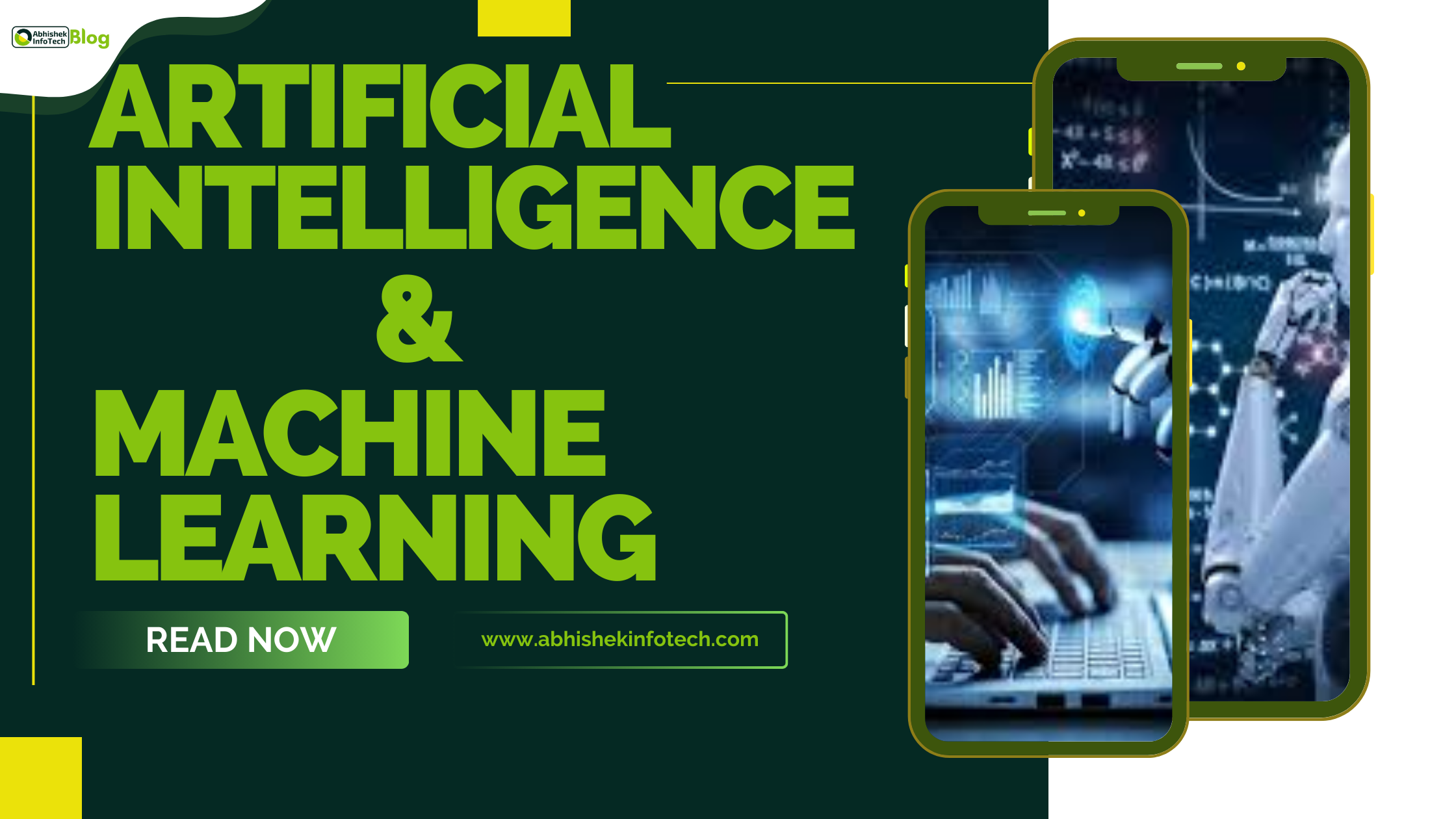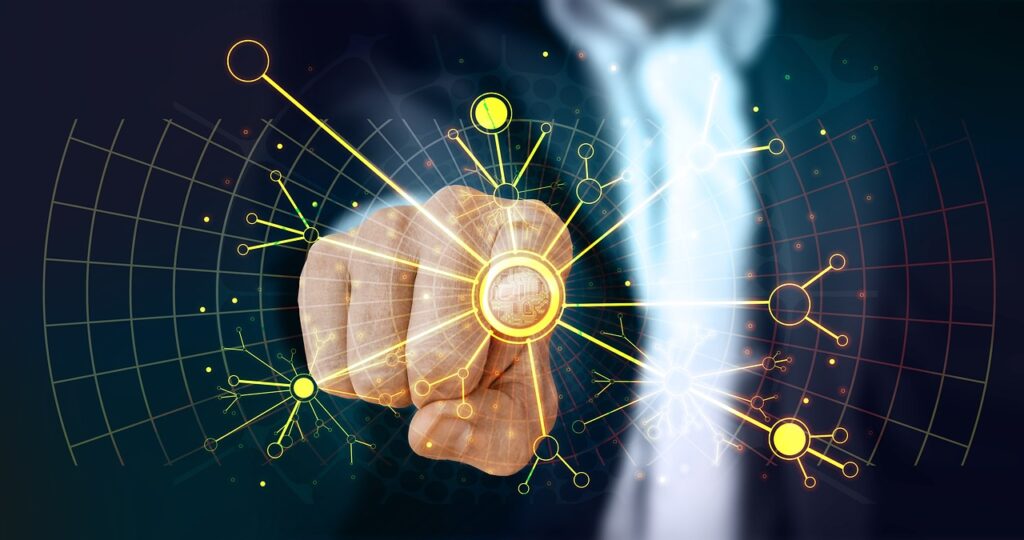The power of AI and ML: How Artificial Intelligence and Machine Learning transform various industries and society?

Artificial Intelligence and Machine Learning: The Future of Technology
Artificial intelligence (AI) and machine learning (ML) are two of the most rapidly developing technologies in the world today. These technologies are having a transformative impact on various industries and society as a whole.
Artificial intelligence (AI) and machine learning (ML) are two of the most transformative technologies of our time. They have the potential to revolutionize many aspects of our lives, from healthcare and education to business and entertainment. In this article, we will discuss some of the latest AI and ML advancements, applications, and their impact on various industries and society.
What is the impact of Artificial Intelligence (AI) and Machine Learning (ML)?
In the modern era of technology, Artificial Intelligence (AI) and Machine Learning (ML) have emerged as the driving forces behind groundbreaking innovations that are reshaping industries and societies. From autonomous vehicles to personalized medicine, AI and ML are creating waves of transformative change, pushing the boundaries of what was once considered possible. In this article, we delve into the latest advancements in AI and ML, explore their diverse applications across industries, and analyze the profound impact they’re making on society.
Artificial Intelligence (AI) and Machine Learning (ML) have rapidly emerged as transformative technologies that are reshaping industries and society as a whole. These technologies are revolutionizing how businesses operate, how healthcare is delivered, how we interact with technology, and more. In this article, we’ll delve into the latest AI and ML developments, explore their wide-ranging applications, and discuss the profound impact they are having on various industries and society.
The Evolution of AI and ML
Artificial Intelligence, the concept of machines mimicking human intelligence, has evolved over decades, culminating in the present era of neural networks and deep learning. Machine Learning, a subset of AI, involves training algorithms to learn from data and improve their performance over time. Recent advancements in hardware capabilities and the availability of vast amounts of data have fueled the rapid progress of AI and ML, enabling them to solve complex problems and automate intricate tasks.
Latest AI and ML Advancements
AI and ML are constantly evolving and improving, thanks to the rapid development of data, algorithms, hardware, and software. Some of the recent emerging trends in AI and ML include:
Some of the latest advancements in AI and ML include:
- Deep learning: Deep learning is a subset of machine learning that uses artificial neural networks to learn from data. Deep learning has been used to achieve breakthroughs in image recognition, natural language processing, and other fields.
- Generative Adversarial Networks (GANs): GANs have revolutionized the creation of realistic content. These networks consist of two parts, a generator and a discriminator, which work together to produce highly convincing images, videos, and even text. GANs have applications in art, fashion, video game design, and more.
- Reinforcement Learning: AI systems are learning how to make decisions through reinforcement learning, where they receive feedback based on their actions. This approach has powered advancements in robotics, gaming, finance, and autonomous vehicles.
- Federated Learning: To address privacy concerns, federated learning enables training machine learning models across multiple devices while keeping data decentralized. This technique is particularly relevant in healthcare, where patient data security is crucial.
- Natural language processing: Natural language processing (NLP) is a field of computer science that deals with the interaction between computers and human (natural) languages. NLP is used in various applications, such as machine translation, chatbots, and sentiment analysis.
- Computer vision: Computer vision is a field of computer science that deals with the extraction of meaningful information from digital images or videos. Computer vision is used in various applications, such as self-driving cars, facial recognition, and medical image analysis.
- Robotics: Robotics is the field of engineering that deals with the design, construction, operation, and application of robots. Robots are increasingly being used in a wide variety of industries, such as manufacturing, healthcare, and logistics.
- Big Data Analytics: With the advent of IoT and 5G devices, the exponential growth of data will continue. AI and ML can help analyze this massive amount of data and extract valuable insights for various purposes.
- Hyperautomation: This is the term coined by Gartner to describe the process of automating as many business processes as possible using AI, ML, robotic process automation (RPA), and other technologies.
- Cloud Innovation: Companies are making a move to cloud adoption due to AI/ML-based applications and services. Cloud platforms offer scalability, flexibility, security, and cost-effectiveness for AI and ML solutions.
- Cybersecurity: As cyberattacks become more sophisticated and frequent, AI and ML can help enhance cybersecurity by detecting threats, preventing breaches, and responding to incidents.
- The Rise of AIoT: AIoT is the combination of AI and the Internet of Things (IoT). It refers to the use of AI and ML to enhance the capabilities of IoT devices, such as smart homes, smart cities, smart factories, etc.
- Ethics: As AI and ML become more pervasive and powerful, ethical issues such as fairness, accountability, transparency, privacy, and human rights become more important. There is a need for ethical frameworks, standards, and regulations to ensure that AI and ML are used responsibly and beneficially.
- Hybrid Workforce: The COVID-19 pandemic has accelerated the adoption of remote work and digital collaboration. AI and ML can help support the hybrid workforce by enabling productivity, communication, creativity, learning, and well-being.
Latest Advancements
- Deep Learning and Neural Networks: Deep learning, a subset of ML, has revolutionized AI by enabling algorithms to automatically learn patterns from data. Convolutional Neural Networks (CNNs) have led to breakthroughs in image and video analysis, while Recurrent Neural Networks (RNNs) have transformed natural language processing and speech recognition.
- Generative Adversarial Networks (GANs): GANs have introduced the concept of AI systems generating content, such as images, music, and text. These networks consist of a generator and a discriminator, competing to produce authentic outputs, leading to advancements in art generation, data augmentation, and even creating realistic deepfakes.
- Reinforcement Learning: This learning paradigm involves training models through trial and error to achieve specific goals. Reinforcement learning has powered advancements in robotics, gaming, and optimization problems. Notably, OpenAI’s GPT-3 has showcased the potential of reinforcement learning for natural language understanding and generation.
- Explainable AI: As AI systems become more complex, understanding their decision-making processes has become crucial. Explainable AI aims to provide insights into how models arrive at their conclusions, fostering transparency, accountability, and trust in AI applications.
Applications of AI and ML
AI and ML are being used in a wide variety of industries, including:
- Healthcare: AI and ML are being used to develop new diagnostic tools, improve the efficiency of clinical trials, and personalize patient care.
- Education: AI and ML can help enhance education quality by enabling adaptive learning, personalized feedback, intelligent tutoring systems, gamification, etc.
- Business: AI and ML can help optimize business processes by enabling automation, analytics, decision support systems, customer service chatbots, recommendation systems, etc.
- Entertainment: AI and ML can help create engaging entertainment experiences by enabling content generation, personalization, interactivity, social media analysis, etc.
- Society: AI and ML can help address social challenges by enabling disaster management, environmental monitoring, poverty alleviation, human rights protection, etc.
- Finance: AI and ML are being used to detect fraud, automate trading, and provide financial advice.
- Manufacturing: AI and ML are being used to optimize production processes, improve product quality, and reduce costs.
- Retail: AI and ML are being used to personalize customer experiences, recommend products, and optimize inventory levels.
- Retail and E-commerce: AI-powered recommendation systems personalize shopping experiences, suggesting products based on user preferences and behavior. Natural language processing also enables chatbots to provide customer support and process orders.
- Logistics: AI and ML are being used to optimize transportation routes, improve delivery times, and reduce costs.
- Autonomous Systems: Self-driving cars and drones are prime examples of AI-driven autonomy. These systems leverage sensors, cameras, and ML algorithms to navigate, make decisions, and interact with their environment in real-time.
- Manufacturing: The industrial sector benefits from predictive maintenance, where AI analyzes sensor data to anticipate equipment failures, reducing downtime and optimizing production processes.
- Transportation: The automotive industry is moving toward self-driving vehicles with AI at the core. ML algorithms process real-time data from sensors to make split-second decisions, enhancing road safety.
AI and ML have a significant impact on various industries and society. They can create new opportunities, enhance efficiency, improve quality, reduce costs, and increase customer satisfaction. However, they can also pose some risks, such as job displacement, bias, discrimination, privacy invasion, and ethical dilemmas. Therefore, it is important to balance the benefits and challenges of AI and ML and ensure that they are used for good.
Impact on Society
While the advancements and applications of AI and ML are undeniably transformative, they also raise important societal considerations:
- Ethics and Bias: AI algorithms can inadvertently perpetuate biases present in the training data, leading to unfair outcomes. Ensuring ethical AI development, addressing bias, and maintaining fairness are critical challenges.
- Ethical Considerations: As AI systems make decisions that impact people’s lives, ethical concerns around bias, transparency, and accountability come to the forefront. Ensuring fairness and avoiding discriminatory outcomes is crucial.
- Job Disruption and Reskilling: The automation potential of AI and ML can lead to job displacement in certain industries. Governments, businesses, and educational institutions must collaborate to provide reskilling opportunities to affected workers.
- Education and Skill Development: The rise of AI and ML underscores the importance of education and continuous learning. Developing AI literacy and upskilling in data-related fields will be essential to remain competitive in the job market.
- Job Landscape: While AI and ML create new job opportunities in fields like data science and AI ethics, they also reshape job roles. Repetitive tasks are automated, allowing humans to focus on creative and strategic work.
- Privacy and Security: The proliferation of AI applications raises concerns about data privacy and security. Protecting sensitive information and preventing misuse of AI-driven technologies is essential.
- Regulation and Governance: Striking the right balance between innovation and regulation is a delicate task. Governments need to establish frameworks that foster AI development while safeguarding against potential risks.
- Human-AI Collaboration: The future likely involves humans and AI working together in harmony. Designing interfaces and interactions that facilitate effective collaboration is key.
Impact of AI and ML on Society
AI and ML have the potential to have a major impact on society, both positive and negative. Some of the potential positive impacts include:
- Improved healthcare: AI and ML can be used to develop new diagnostic tools, improve the efficiency of clinical trials, and personalize patient care. This could lead to earlier diagnosis and treatment of diseases, as well as better outcomes for patients.
- Increased productivity: AI and ML can be used to automate tasks that are currently done by humans. This could lead to increased productivity in a variety of industries.
- Improved decision-making: AI and ML can be used to analyze data and make predictions. This could help businesses make better decisions about things like product development, marketing, and investment.
- Enhanced creativity: AI and ML can generate new ideas and concepts. This could lead to new products, services, and experiences.
Some of the potential negative impacts of AI and ML include:
- Job displacement: AI and ML could lead to the displacement of some jobs. This is because machines can now automate many tasks that were previously done by humans.
- Increased inequality: AI and ML could lead to increased inequality. This is because the benefits of these technologies are likely to accrue to those who have the resources to invest in them.
- Data privacy concerns: AI and ML require large amounts of data to train and operate. This raises concerns about data privacy and security.
- Ethical concerns: AI and ML raise ethical concerns, such as the potential for bias and discrimination.
It is important to carefully consider the potential impacts of AI and ML before deploying these technologies. It is also important to develop ethical guidelines for the use of these technologies.
AI and ML are amazing technologies that can transform our world in many ways. They are constantly advancing and improving and have a wide range of applications and impacts on various industries and society. However, they also require careful consideration of their ethical and social implications. We hope that this article has given you some insights into the latest AI and ML trends, applications, and impact and inspired you to learn more about them.

Conclusion
Artificial Intelligence and Machine Learning have transcended the realm of science fiction to become powerful tools shaping our present and future. The latest advancements and applications of AI and ML are already transforming industries, from healthcare to entertainment, and their societal impact is profound. As these technologies continue to evolve, it’s imperative for stakeholders to navigate the challenges responsibly, harnessing the potential of AI and ML to drive positive change while mitigating risks. Embracing a future of human-AI collaboration holds the promise of an era where innovation knows no bounds.
Overall, AI and ML are powerful technologies that have the potential to revolutionize many aspects of our lives. However, it is important to use these technologies responsibly and ethically.
- Earn Money Online By Doing Simple Writing Jobs
- Get Canva Pro Subscription for Just ₹799 Lifetime: Limited-Time Offer
- Elementor Review: A Comprehensive Guide to the Ultimate Page Builder
- TubeBuddy Review: The Ultimate Guide for YouTube Creators
- Speechelo: The Best Text To Speech Like Human Voices
Read This also👉 What is Sensor? How does this work in our Phone-Computer-TV?







